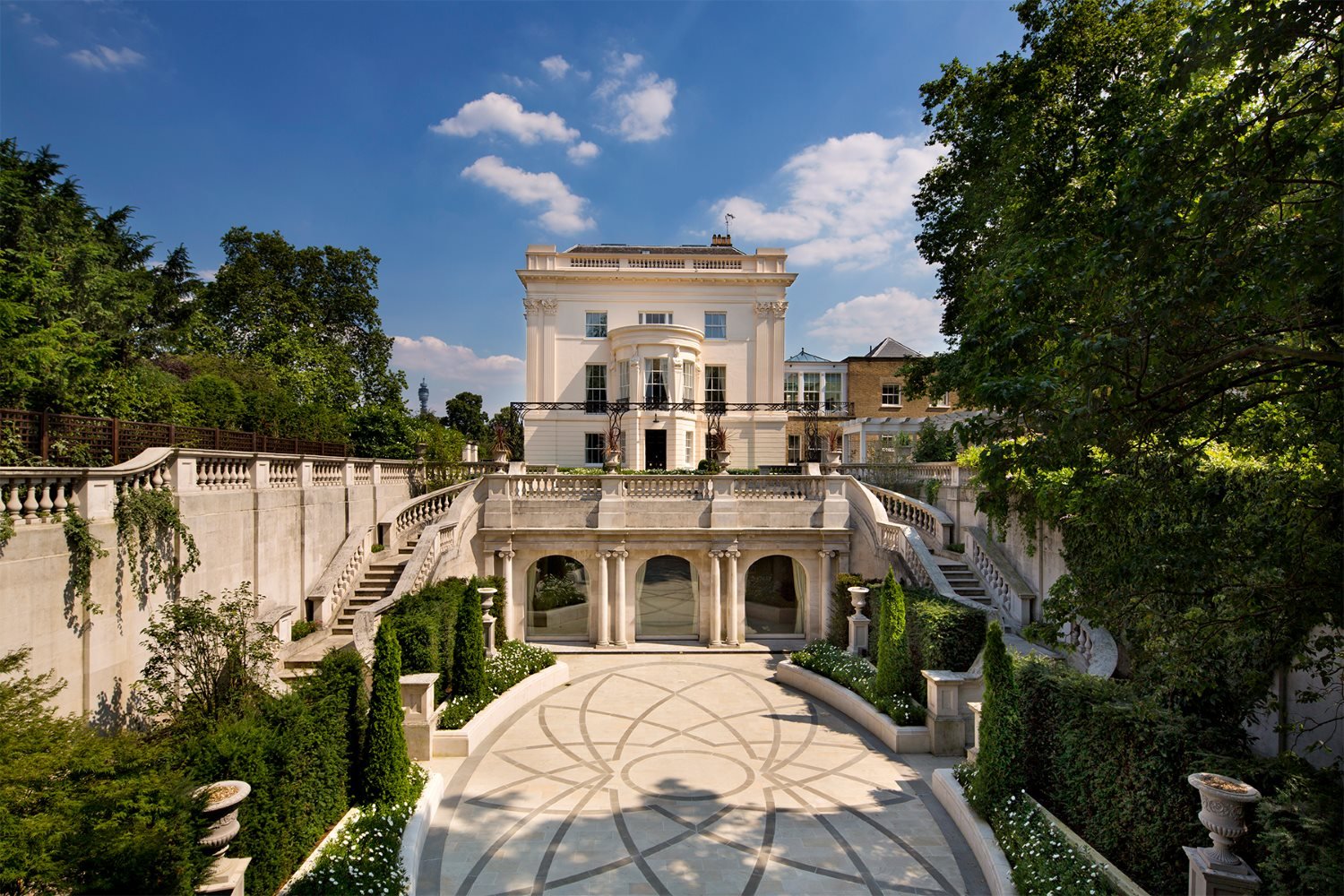The Secrets of Statue Restoration
As specialists in listed building conservation, we regularly find ourselves restoring original decorative features including sculptures, statues and carvings from various design periods throughout history.
Whether it’s stone faces carved into a department store façade, elegant caryatids supporting a grand Georgian window or playful cherubs on a balcony, we work with specialist conservation partners to clean, repair and restore important decorative features.
LA Partner, Kathryn Archer looks back on three key projects that involved statue restoration: Selfridges on Oxford Street, 1 Cornwall Terrace, and our most recent residential project renovating a Victorian villa in Little Venice.
Selfridges
The exterior of Selfridges on Oxford Street, with its 30 stone faces.
American architect Daniel Burnham designed the world-famous Selfridges store on Oxford Street at the start of the 20th century. A fine example of the Beaux-arts style, the five-storey building was constructed in Portland stone with a steel frame – one of the earliest in the UK.
The building’s most prominent decorative feature is the Queen of Time, a polychrome sculpture by Gilbert Bayes depicting a woman standing on the prow of the Ship of Commerce above the main entrance.
Less visible from street level are 30 stone faces, all part of the Gilbert Bayes composition and all distinct from each other, carved into a frieze near the top of the building. Today, it would be rare that anyone would invest a significant sum on decorative features such as these that can barely be seen from street level.
When the building underwent major renovation work, LA London worked with English Heritage and Westminster City Council to restore the ornate stone facade, which had been damaged by pollution and weather. The building was suffering from ‘Regent Street Disease’, this being a known problem of steel-framed, stone-clad buildings of the period. The corroding steel frame was slowly expanding and forcing the stone panels to move and loosen.
LA London was amongst the pioneers in taking cathodic protection, an early-19th century technology used in the shipping industry, to building preservation. We arrested the corrosion of the metal by passing an electrical current through it, effectively making it the cathode of an electric cell. We then went on to clean and repair the intricate stonework. Not only that, but we used intermittent nebulous sprays and a gentle, low-pressure DOFF system to clean the stone. The faces themselves were in comparatively good condition, protected under the overhang of the grand stone cornice.
Throughout the project we worked closely with stone specialist John Rushworth, now CEO of Restore London, who says: “It was a privilege to witness these remarkable art deco features at close quarters up on the scaffolding – and a reminder that it’s always worth looking up on a walk through any big city to witness the architectural marvels you may otherwise have missed.”
1 Cornwall Terrace
LA London was appointed to design and deliver the full refurbishment and fit-out of a Grade I-listed property on Cornwall Terrace. Designed in the Regency style by Decimus Burton as part of John Nash’s masterplan, the property occupies a premium plot overlooking Regent’s Park.
One of the most striking features of the building is the two-storey bow window overlooking the garden. Four caryatids – sculpted female figures – form decorative columns between the windows and the door, supporting the pediment.
No. 1 Cornwall Terrace with its caryatid bow at the centre.
Over the years, the stone had absorbed huge amounts of pollution and dirt, becoming badly stained. The caryatids had previously been poorly refurbished by painting, which had allowed water to enter and corrode the stonework. Attempts to fill holes with plaster and more paint had made the problem worse.
Our specialist team applied poultices to gently draw out the staining before carefully restoring the damage and returning the caryatids to their pristine state.
Little Venice
LA London has recently completed work on a beautiful Victorian villa in Little Venice. A wrought-iron balcony on the rear bay of the property features four cherubs looking out onto the garden, each of which represents one of the four seasons.
Although the property, and therefore the cherubs, are not listed, the new owners of the property were keen to retain them as a unique decorative feature. However, they were in a poor condition after 150-plus years of weathering combined with up to 8mm of paint layers from redecorations over the same time period. This had either masked or eroded their features. Once the paint had been carefully removed, it was a slightly surreal moment to find ourselves smoothing the cherubs’ cheeks to restore their flawless complexions!
The team also restored faces and busts carved into the stonework elsewhere on the building’s exterior, as well as extensive decorative mouldings throughout the house, including a number of highly ornate fibrous plaster ceilings.


![digtal 1016[1].jpg](https://images.squarespace-cdn.com/content/v1/6687cf03f8e03644eb38ee97/1753136120731-N87RCR9F0O0D99MQYINP/digtal+1016%5B1%5D.jpg)









